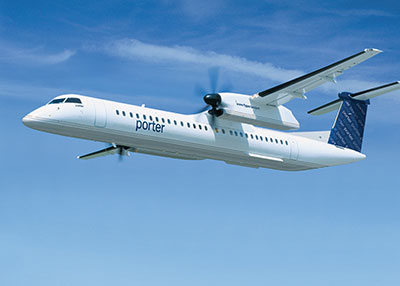
Features
Airports
On Final: Airlines, airports making it work
The year 2014 will mark the 15th year of the signing of the Memorandum of Agreement on Airport Improvement Fees (AIF).
November 14, 2013 By John McKenna
The year 2014 will mark the 15th year of the signing of the Memorandum of Agreement on Airport Improvement Fees (AIF). The purpose of this agreement is to facilitate and set parameters for “the collection of fees by signatory air carriers for airports from air carrier passengers if an airport decides to impose such fees to pay for the future expansion of certain airport facilities.”
 |
|
| ATAC has always been a strong proponent of eliminating, or at least substantially reducing, airport rents. Photo: Porter Airlines
|
The signatories of this agreement include some 50 commercial air carriers, including Canadian carriers, most foreign carriers coming to Canada, and 28 major Canadian airports. The agreement has a 20-year renewable term, which ends on May 31, 2019.
When the Canadian Government divested itself of Canadian airports in the 1990s, most of these airports were in dire need of modernization. The AIF agreement has been, as intended, the enabler of the rebuilding of these strategic socioeconomic assets all over the country. Funds generated by the AIF are a very significant source of revenue for all signatory airports and a major instrument of infrastructure financing. In the 15 years since the agreement was signed, more than $4 billion has been raised to help build and modernize our airports’ infrastructure.
The agreement includes the establishment of a consultative committee in each airport to oversee the use of funds raised through the AIF. This has established a functional and ongoing partnership between airlines and airports through which all parties are included in the dialogue. In the increasingly complex world of air transport, the working relationship established by this agreement is certainly an example to follow. Airports and airlines are crucial business partners that depend on each other for their respective livelihoods. Consequently, they are bound to have issues, which need to be worked out. The AIF agreement so far has provided the necessary tools to iron out what sometimes could have turned into contentious issues.
The airlines collect the funds at the time of purchase of the tickets, which allows the traveller not to have to make payment at the airports, as was the system in a number of airports prior to the implementation of this agreement. The airlines are compensated by the airports through a negotiated handling fee and the airports save having to set up and manage a costly collection mechanism.
The amount of the AIF ranges from $5 to $30 across the country and is set by the respective Canadian Airport Authorities. The Air Transport Association of Canada (ATAC) is the administrator of the agreement. ATAC’s duties include: advising all parties of new signatories; changes to AIF rates; proposed amendments to the agreement; establishing and supporting the technical committee; informing signatories (chiefly new entrants) or other interested parties on the terms of the agreement; and to attempt to settle disputes by means of discussion and, if necessary, obtaining legal opinions to guide signatories.
Airports are a key element of the Canadian transportation system, a vital economic tool, a lifeline to the north, a crucial link to the international community, and a major Canadian asset. From a financial point of view, the net book value of the top eight airports alone has gone from $1.2 billion in 1996 in the divestment period to more than $12 billion in 2012. This growth in value, resulting largely from continuous investment, has been paid for almost entirely by the travelling public. Canadian airports today are amongst the most modern in the world, decades ahead of most if not all American airports in terms of development.
While the role of the Canadian government will be reduced to that of a silent partner, it has nonetheless pocketed more than $3 billion in airport rent since the MOA was signed in 1999. Airport growth benefits the government as the ground rent it collects from airports increases as the airports develop and prosper. ATAC has always been a strong proponent of eliminating, or at least substantially reducing, airport rents, and the amount of money the government takes from the air transport industry in general.
This agreement has been a resounding success for all signatories. For an agreement to be successful all parties have to benefit, and the fact that in its 15 years none of the signatories have dropped out is a clear indication that this agreement works for all involved. ATAC is proud to have been one of the instigators of this most important financial instrument and will continue to promote the MOA on AIF for many years to come.
John McKenna is the president and CEO of the Air Transport Association of Canada.